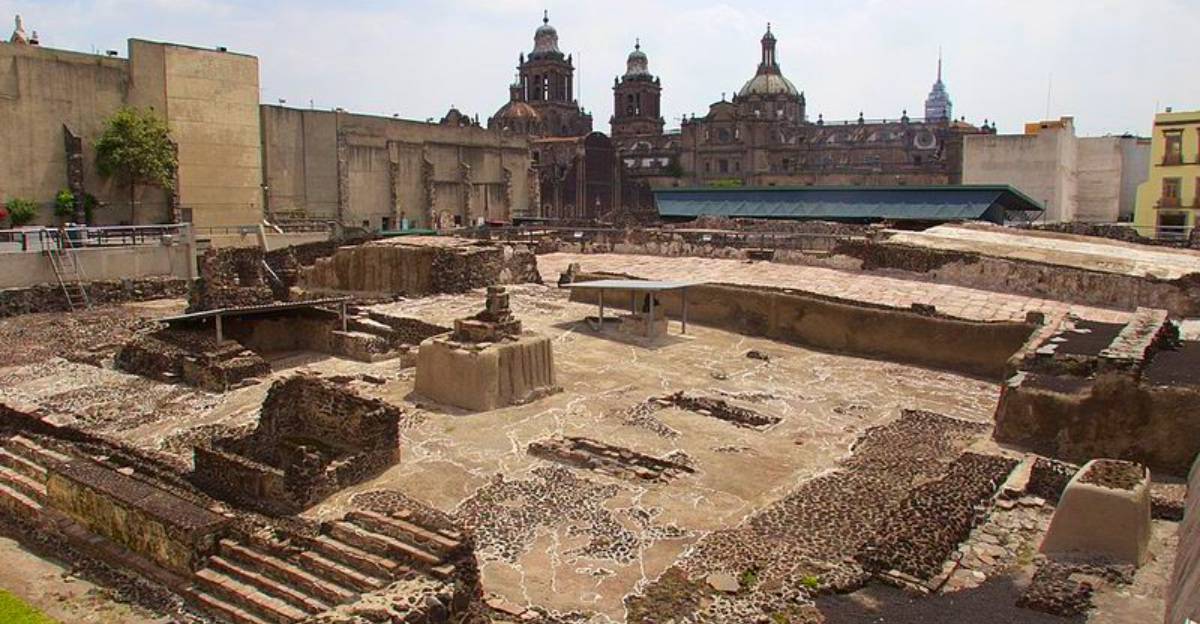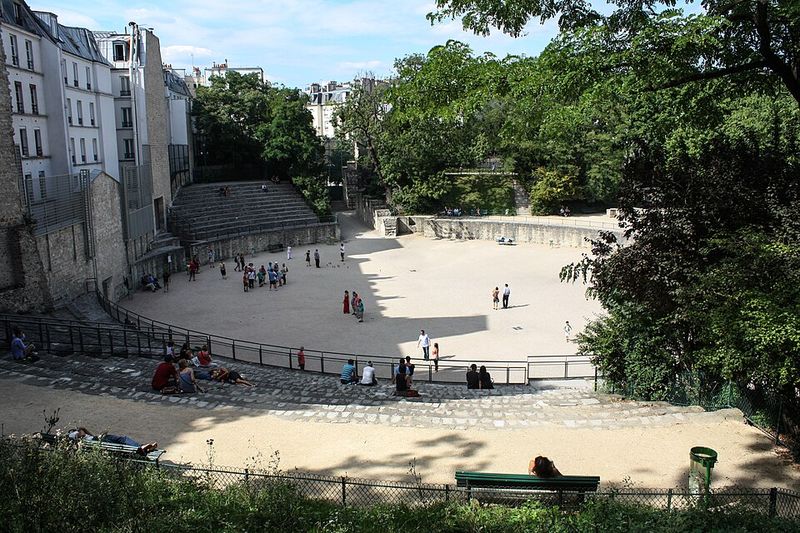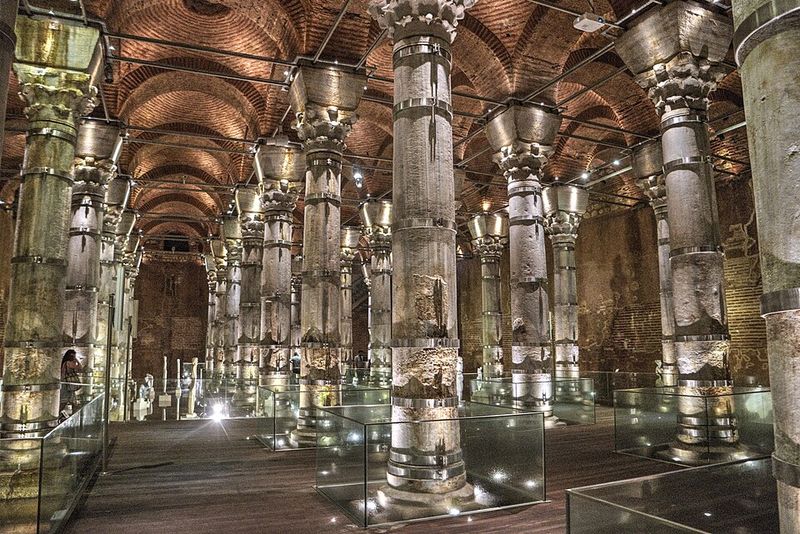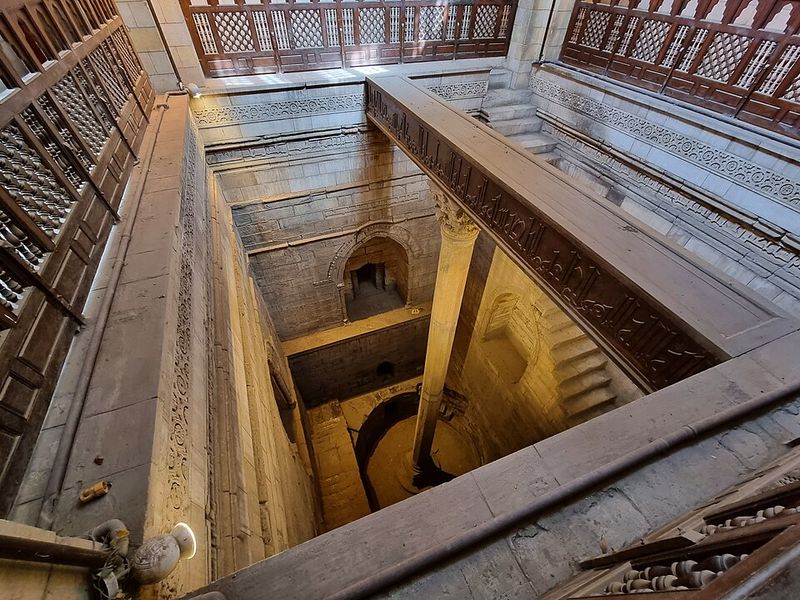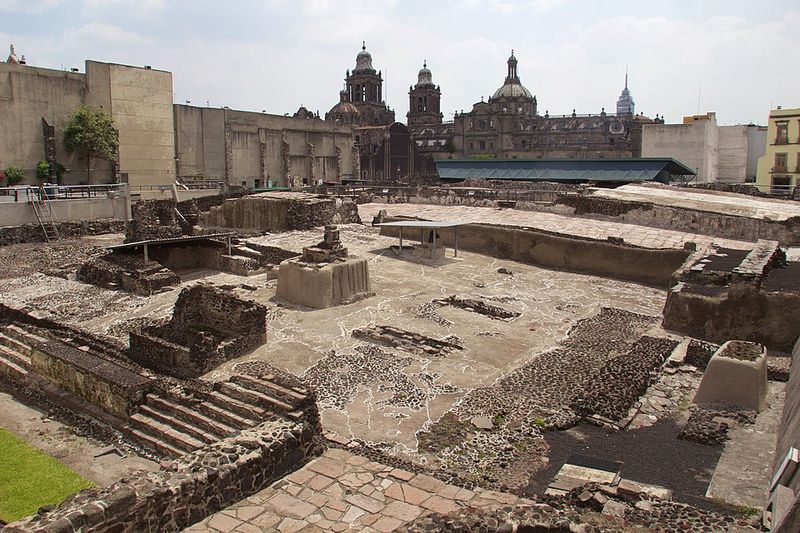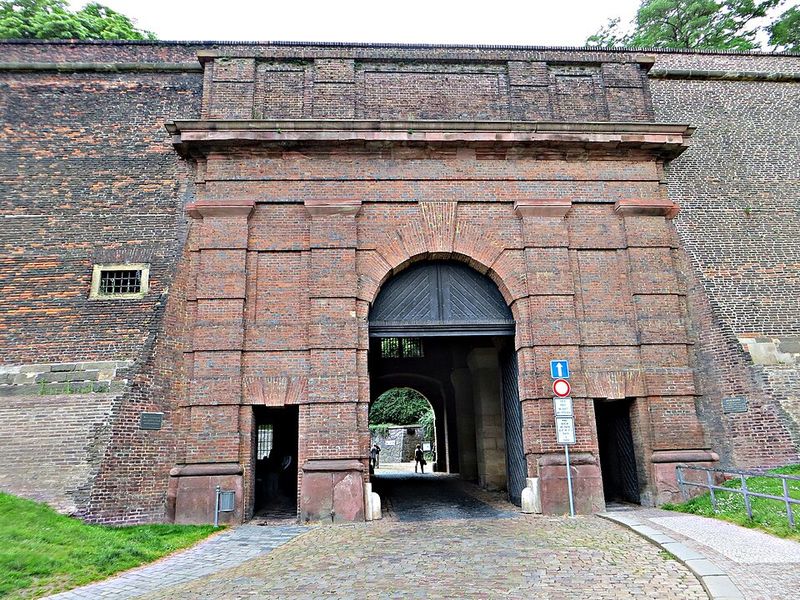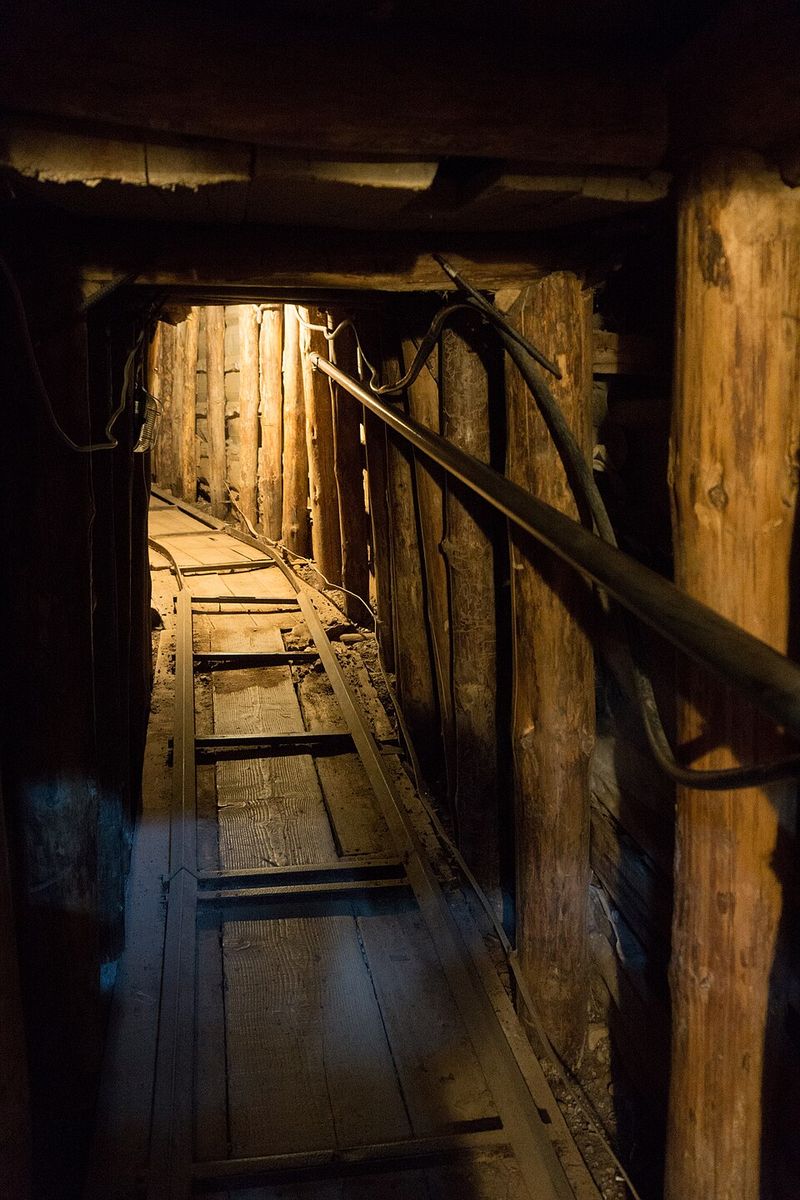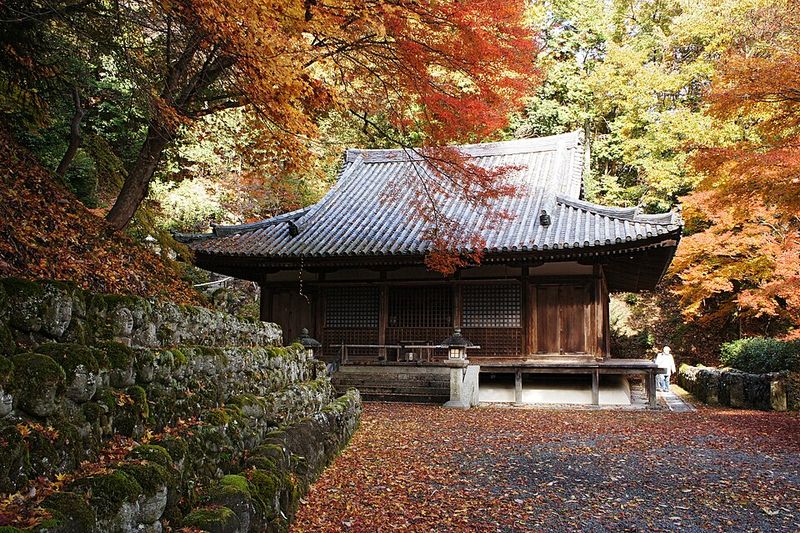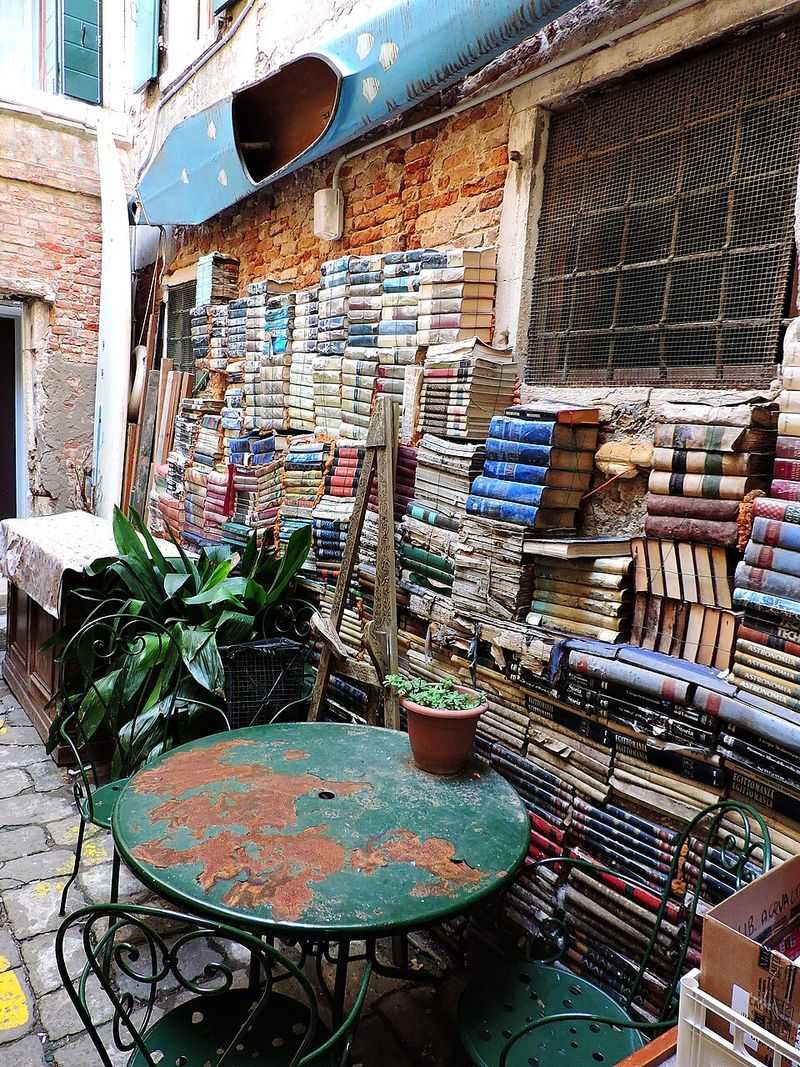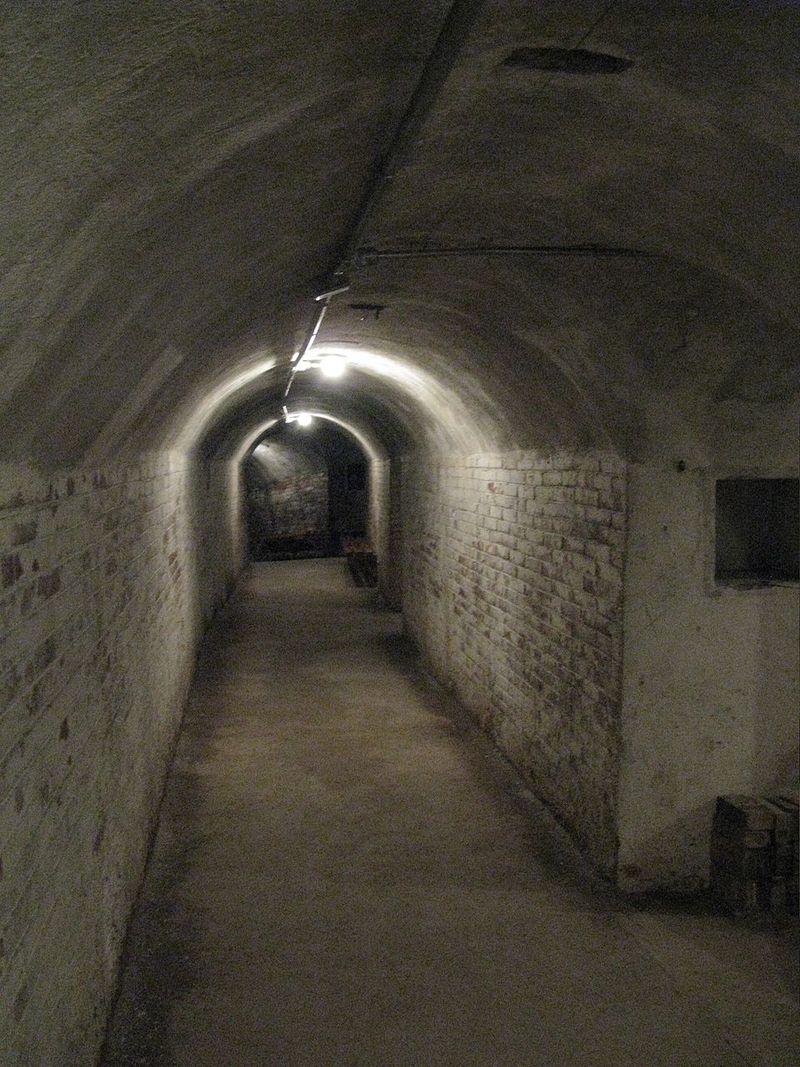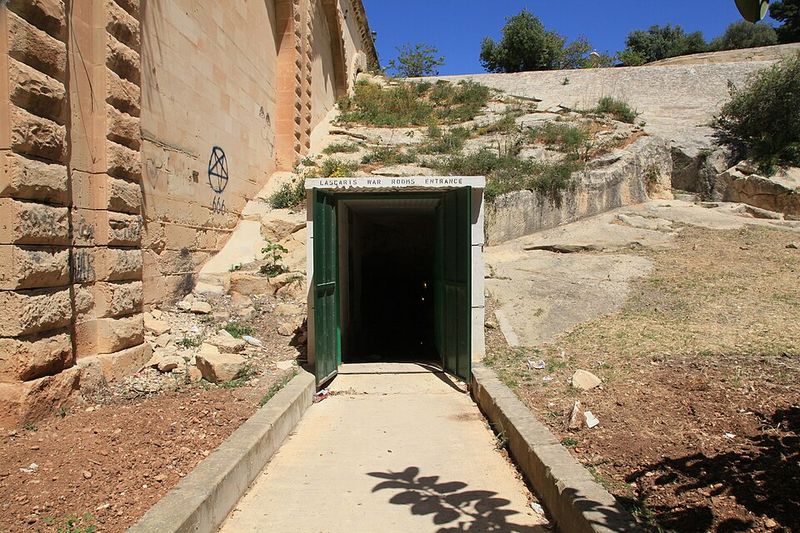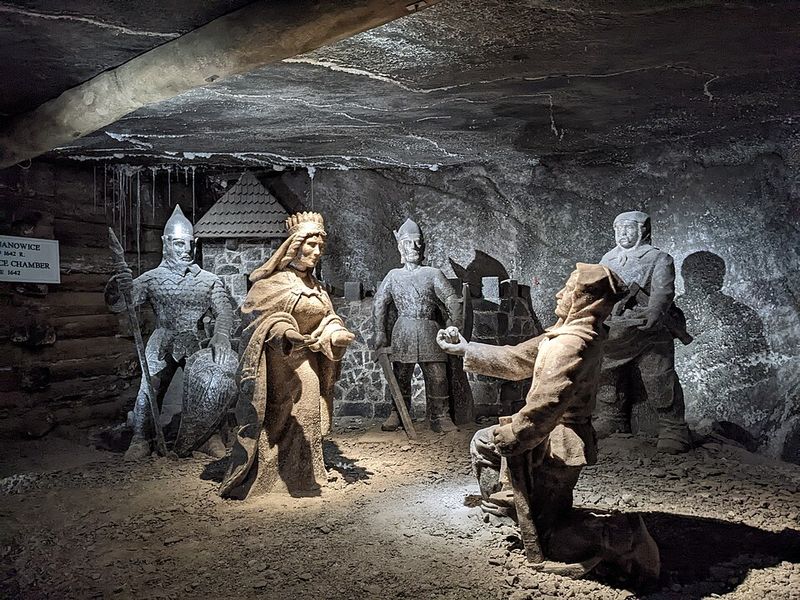Every great city holds mysteries waiting to be discovered. Beyond the famous landmarks and tourist spots lie hidden treasures that tell stories of ancient civilizations, forgotten wars, and everyday heroes. These secret places reveal the true soul of historic cities, offering visitors a chance to step off the beaten path and experience something truly remarkable.
1. Rome – The Mithraeum of San Clemente
Walking into the Basilica di San Clemente feels like entering a time machine. Beneath the medieval church lies a 4th-century basilica, and deeper still, a Roman house hiding a secret temple to Mithras, the mysterious Persian god of light.
This underground sanctuary served a secretive cult during the 2nd and 3rd centuries. Members gathered in the dim chamber to perform rituals around a carved stone altar. Today, visitors can explore all three layers of history stacked on top of each other.
Guided visits take you through narrow passages where you can hear ancient water flowing below. The cool, shadowy atmosphere makes it one of Rome’s most haunting experiences, far from the crowded Colosseum above.
2. Paris – Arènes de Lutèce
Most visitors never realize Paris was once a Roman city called Lutetia. Hidden in the Latin Quarter, a 1st-century amphitheater still stands where gladiators once battled and actors performed for crowds.
You can walk right onto the arena floor where ancient spectacles unfolded nearly 2,000 years ago. Stone seating tiers rise around the oval space, which now serves as a peaceful park. Local residents play boules on the same ground where Roman citizens cheered.
Rediscovered in 1869 during construction work, the arena was nearly destroyed. Writer Victor Hugo helped save it, and today it remains one of Paris’s oldest surviving monuments, offering a quiet escape from the bustling city streets.
3. London – Postman’s Park & the Watts Memorial
Tucked near St. Paul’s Cathedral, a small garden honors forgotten heroes. Postman’s Park got its name from the postal workers who once relaxed there during lunch breaks.
The Watts Memorial features hand-painted ceramic plaques telling heartbreaking stories of ordinary people who died rescuing others. One remembers a young woman who caught fire trying to save her sister. Another commemorates a man who drowned retrieving a child from a canal.
Victorian artist George Frederic Watts created this tribute in 1900, believing everyday bravery deserved recognition as much as military valor. Reading the plaques brings tears to many visitors’ eyes. The quiet garden offers a powerful reminder that heroism lives in unexpected places throughout history.
4. Istanbul – Theodosius (Şerefiye) Cistern
Byzantine emperors knew water meant survival. Beneath Istanbul’s streets, massive underground chambers once stored the city’s water supply during sieges and droughts.
The Theodosius Cistern, built in the 5th century, recently reopened after careful restoration. Walking through feels like entering an underwater palace. Marble columns rise from shallow pools, their reflections creating magical patterns. Modern lighting highlights the ancient engineering that kept Constantinople thriving.
Unlike the crowded Basilica Cistern, this shimmering water-hall offers a calmer experience. You can appreciate the Byzantine builders’ skill without battling tour groups. The space hosts occasional art exhibitions, blending ancient architecture with contemporary creativity in an unforgettable underground setting.
5. Cairo – The Nilometer on Rhoda Island
For thousands of years, Egypt’s survival depended on the Nile’s annual flood. Too little water meant famine; too much brought destruction. Ancient engineers built nilometers to measure the river’s rise and predict harvests.
The Rhoda Island Nilometer, constructed in 861 CE during the Abbasid era, still stands as a beautiful example of Islamic architecture. Stone steps descend into a square chamber where an octagonal column bears measurement marks. Priests would announce readings that determined tax rates for the coming year.
Today, visitors can climb down into this riverside relic and imagine officials anxiously watching water levels. The structure survived centuries of floods and political upheaval, offering a direct connection to Egypt’s agricultural past.
6. Jerusalem – Zedekiah’s Cave (Solomon’s Quarries)
Beneath Jerusalem’s Old City lies a secret world carved by human hands. Zedekiah’s Cave stretches over 200 meters underground, where workers once extracted limestone blocks for ancient construction projects.
Legend claims King Solomon quarried stone here for the First Temple, though historians debate the timeline. The cave’s name comes from another story: King Zedekiah supposedly fled through these tunnels when Babylonians conquered Jerusalem in 586 BCE.
Visitors can explore the vast chambers independently or join guided tours. Cool air and echoing spaces create an otherworldly atmosphere. Look closely and you’ll see ancient tool marks on the walls, left by quarrymen thousands of years ago. It’s a humbling reminder of the labor behind Jerusalem’s magnificent buildings.
7. Athens – Socrates’ Prison on Filopappou Hill
Philosophy changed the world in ancient Athens. On Filopappou Hill, carved chambers bear the weight of a powerful legend: this may be where Socrates spent his final days before drinking hemlock in 399 BCE.
Historians debate whether these rock-cut rooms actually held the famous philosopher. Regardless of the truth, the site offers a moving experience. Standing in the dim chambers, you can imagine Socrates discussing immortality with his students before accepting his death sentence.
The location provides stunning views across to the Acropolis, completely free to explore. Few tourists make the climb, so you’ll likely have the peaceful hillside to yourself. Whether or not Socrates walked here, the spot invites philosophical reflection.
8. Mexico City – Templo Mayor
When Spanish conquistadors arrived in 1519, they found Tenochtitlan, a magnificent Aztec capital built on a lake. The Templo Mayor, a massive twin pyramid, stood at its sacred heart, dedicated to the gods of war and rain.
After the conquest, the temple was buried beneath colonial buildings. In 1978, electrical workers accidentally discovered a massive stone disc depicting the moon goddess Coyolxauhqui. Excavations revealed the pyramid’s foundations just steps from the Metropolitan Cathedral.
Today, visitors can walk among the ruins and explore an excellent museum displaying thousands of artifacts. Recent roof repairs have been completed, and the site is fully open. Standing there, you witness two civilizations layered on top of each other in dramatic fashion.
9. Prague – Vyšehrad Casemates & Gorlice Hall
Fortress walls tell stories of battles and sieges. Beneath Prague’s Vyšehrad fortress, a network of 17th and 18th-century military tunnels winds through the rock, built to protect the city from invaders.
Guided tours lead visitors through the casemates to the massive Gorlice Hall. This underground chamber now serves an unexpected purpose: protecting original Baroque statues from Charles Bridge. The sculptures were moved here to prevent further weather damage, replaced by replicas on the famous bridge.
Walking these dim corridors, you can imagine soldiers preparing for battle centuries ago. The tours run year-round, offering a fascinating glimpse into Prague’s military history. The combination of defensive architecture and artistic preservation makes this one of the city’s most unique attractions.
10. Lisbon – Carmo Convent
On All Saints’ Day in 1755, a catastrophic earthquake shook Lisbon, followed by a tsunami and fires that destroyed much of the city. The beautiful Carmo Convent lost its roof in seconds, killing hundreds of worshippers inside.
Rather than rebuild, the ruins were left open to the sky as a haunting memorial. Gothic arches now frame clouds and blue sky instead of vaulted ceilings. The roofless nave creates an ethereal atmosphere unlike any other church in Europe.
Today, the space houses an archaeological museum filled with ancient artifacts, medieval tombs, and even two Peruvian mummies. Located right above the Chiado neighborhood, the ruins offer a powerful reminder of nature’s force and human resilience through tragedy and rebuilding.
11. Rio de Janeiro – Royal Portuguese Reading Room
Step inside and your breath catches. The Royal Portuguese Reading Room looks like something from a fantasy novel, with books climbing toward a magnificent stained-glass skylight that bathes everything in colored light.
Founded in 1837 by Portuguese immigrants, the library houses over 350,000 volumes, including rare first editions and manuscripts. The reading hall features intricate woodwork, wrought-iron galleries, and a chandelier suspended from the dazzling ceiling. Every surface celebrates Portuguese culture and craftsmanship.
Remarkably, this jewel-box library remains open to the public. Visitors can wander freely, though silence is expected out of respect for researchers working among the collections. It’s one of Rio’s most beautiful hidden treasures, often overlooked by tourists heading to beaches and mountains.
12. Sarajevo – Tunnel of Hope Museum
During the 1990s siege of Sarajevo, residents faced starvation and constant shelling. Cut off from the outside world, they engineered a desperate solution: an 800-meter tunnel dug beneath the airport runway, connecting the besieged city to free territory.
Families worked in shifts, digging through mud and risking collapse. The narrow passage, barely tall enough to stand in, became Sarajevo’s lifeline. Food, weapons, medicine, and people flowed through this underground artery for nearly four years.
Today, the Tunnel of Hope Museum preserves a section of the passage along with powerful exhibits documenting the siege. Walking through the cramped space brings the recent conflict into sharp focus. It’s an essential visit for understanding Sarajevo’s resilience and the human cost of war.
13. Paris – La Petite Ceinture (The Little Belt Railway)
In the 1850s, Paris built a circular railway to move goods and passengers around the city’s edge. For decades, the Little Belt Railway hummed with activity, connecting neighborhoods and industries.
When the metro system expanded, the railway fell into disuse. Nature slowly reclaimed the tracks, creating wild green corridors snaking through urban neighborhoods. Flowers push through gravel, trees arch over rusting rails, and birds nest where trains once rattled past.
Several sections now open as walking paths, offering an off-beat urban nature experience. It’s like wandering through a secret garden that only locals know about. The contrast between wild greenery and surrounding buildings creates a magical atmosphere completely different from typical Parisian parks.
14. Edinburgh – South Bridge Vaults
Edinburgh’s Old Town hides a dark secret beneath its streets. When South Bridge was built in 1788, the arches underneath created a warren of chambers. At first, merchants used them for storage and workshops.
As conditions deteriorated, the vaults became home to Edinburgh’s poorest residents. Criminals operated in the darkness, and diseases spread in the damp, airless spaces. Eventually, the chambers were sealed and forgotten until archaeologists rediscovered them in the 1980s.
Today, guided tours take visitors through the eerie 18th-century chambers. Stories of ghosts and murders add to the spine-tingling atmosphere. The vaults reveal Edinburgh’s harsh social history, showing how the city’s wealthy literally lived on top of its suffering poor. It’s both fascinating and deeply unsettling.
15. Kyoto – Ōtagi Nenbutsu-ji
Climbing the hillside in Arashiyama, you suddenly encounter an army of stone faces. Over 1,200 rakan statues crowd the temple grounds, each one unique, each carved with a different expression.
These aren’t ancient artifacts. In the 1980s, sculptor Kocho Nishimura invited visitors to carve their own statues after typhoons damaged the temple. The result is delightfully whimsical: some rakan smile, others look grumpy, a few hold musical instruments or sports equipment.
Walking among them feels like attending a party frozen in stone. Children love finding the funniest faces. The serene, lesser-visited corner of Arashiyama offers a completely different experience from Kyoto’s famous golden pavilions and bamboo groves. It’s quirky, peaceful, and surprisingly moving in its collective creativity.
16. Venice – Libreria Acqua Alta
Venice floods regularly, which creates unique challenges for a bookshop owner. Luigi Frizzo found a creative solution: store books in gondolas, bathtubs, and even a full-sized boat floating inside his shop.
Libreria Acqua Alta, meaning “High Water Bookshop,” embraces Venice’s watery reality with humor and style. Books pile floor to ceiling in waterproof vessels. Cats lounge on paperback mountains. The scent of old paper mixes with canal dampness.
Out back, a famous “book staircase” built from water-damaged volumes leads to a tiny terrace overlooking a canal. It’s become an Instagram sensation, but the real magic is wandering the cramped, chaotic interior. This flood-ready bookshop perfectly captures Venice’s quirky spirit and constant battle with the sea.
17. Barcelona – Refugi 307 (Civil War Air-Raid Shelter)
When bombs fell on Barcelona during the Spanish Civil War, citizens needed protection fast. Volunteers carved Refugi 307 into Montjuïc’s soft sandstone, creating 650 feet of tunnels that could shelter over 2,000 people.
Families huddled here during air raids between 1936 and 1939, listening to explosions above. The shelter included a water fountain, toilets, an infirmary, and even a children’s play area. Dim electric lights barely pushed back the darkness and fear.
Now part of Barcelona’s city history museum (MUHBA), the shelter opens for guided visits. Walking the narrow passages, you can still see original benches, warning signs, and graffiti. It’s a sobering reminder that Barcelona’s beautiful streets witnessed terrible violence less than a century ago.
18. Xi’an – Hanyangling (Tomb of Emperor Jingdi)
Everyone knows about Xi’an’s famous Terracotta Army, but Emperor Jingdi’s tomb offers something equally fascinating with far fewer crowds. Built during the Han Dynasty around 153 BCE, this burial complex holds thousands of smaller figures, about one-third life-size.
What makes Hanyangling special is how you view it. Glass walkways suspended over the excavations let you look straight down at the figures in their original positions. Unlike the restored warriors elsewhere, these appear exactly as archaeologists found them, creating an intimate archaeological experience.
The miniature soldiers, servants, and animals reveal incredible detail despite their size. Many originally wore silk clothing, now disintegrated. It’s a calmer, more contemplative counterpoint to the massive Terracotta Army, offering insight into Han Dynasty beliefs about the afterlife.
19. Valletta – Lascaris War Rooms
Malta endured some of World War Two’s heaviest bombing. From tunnels carved beneath Valletta’s massive bastions, Allied commanders coordinated Mediterranean operations that changed the war’s course.
The Lascaris War Rooms served as headquarters for General Eisenhower and British commanders. From these underground chambers, they planned the invasions of Sicily and Italy. Maps still cover the walls, marked with decades-old positions. Telephones and equipment sit ready, as if officers just stepped out for tea.
Careful restoration brings Malta’s pivotal war role to life. Walking through the cramped rooms, you sense the tension of those desperate years when Malta’s survival hung by a thread. The island’s courage earned it the George Cross, Britain’s highest civilian honor.
20. Amsterdam – The Begijnhof
Amsterdam’s bustling shopping street Spui hides a remarkable secret. Behind an unmarked wooden door lies the Begijnhof, a tranquil medieval courtyard that feels worlds away from the city noise just steps behind you.
Founded in the 14th century, this enclosed community housed the Beguines, religious women who lived like nuns but took no formal vows. They devoted themselves to caring for Amsterdam’s sick and poor while maintaining their independence.
Today, the courtyard remains a residential community, but visitors can quietly explore the garden and small chapels. Historic houses surround the green space, including Amsterdam’s oldest surviving wooden house from around 1465. It’s one of the city’s most peaceful historic enclaves, offering a moment of calm reflection amid Amsterdam’s constant energy.
21. Buenos Aires – El Ateneo Grand Splendid
Imagine shopping for books while sitting in a theater box overlooking a stage. El Ateneo Grand Splendid makes this dream real, transforming a 1919 theater into one of the world’s most beautiful bookstores.
The original theater hosted tango shows and early films. When it became a bookstore in 2000, designers kept the stage (now a café), ornate balconies, and stunning frescoed ceiling. Bookshelves fill where audiences once sat, but the theatrical magic remains.
Visitors come as much for the architecture as the books. You can browse bestsellers while standing on the former stage or sip coffee beneath cherubs painted on the dome. National Geographic named it the world’s second most beautiful bookstore, and wandering its levels feels like stepping into a literary cathedral.
22. Berlin – Teufelsberg (Devil’s Mountain)
Berlin’s Teufelsberg isn’t a natural hill. It’s a mountain of rubble, built from 25 million cubic meters of debris left after World War Two bombing raids destroyed the city.
During the Cold War, American intelligence built a listening station on top, using the height to intercept Soviet communications. Giant radar domes crowned the hill, and spies worked around the clock in the windowless buildings below.
After reunification, the station was abandoned. Today, the ruins have become an eerie outdoor gallery covered in vibrant graffiti. Guided tours explore the decaying buildings and explain the site’s layered history: Nazi military college buried below, Cold War surveillance above, and now street art transforming it again. It’s Berlin’s complicated past compressed into one strange, compelling location.
23. Stockholm – Woodland Cemetery (Skogskyrkogården)
Most cemeteries feel heavy with grief. Stockholm’s Woodland Cemetery, designed in the 1920s, offers something different: a peaceful forest where death feels like a natural part of life’s cycle.
Architects Gunnar Asplund and Sigurd Lewerentz created a masterpiece of landscape design. Pine trees rise above simple graves. Paths wind through natural terrain. The minimalist chapels blend into the forest rather than dominating it.
UNESCO designated it a World Heritage site for revolutionizing cemetery design worldwide. Visitors come not just to pay respects but to walk, think, and find calm among the trees. Even famous residents like Greta Garbo rest here quietly. It’s a place that makes peace with mortality, showing how thoughtful design can transform even death into something beautiful and serene.
24. Krakow – Wieliczka Salt Mine
Miners worked deep underground for centuries, but they didn’t just extract salt. In Wieliczka, they carved an entire underground world from rock salt, including chapels, sculptures, and even chandeliers made completely from salt crystals.
The mine operated continuously from the 13th century until 2007, reaching depths of over 1,000 feet. Miners carved chambers, created artwork, and built elaborate chapels to pray for safety. The St. Kinga’s Chapel, 330 feet underground, features salt altarpieces and biblical scenes that took decades to complete.
Today, visitors descend wooden stairs to explore the underground passages, lakes, and chambers. Everything glistens in the lamplight. You can even lick the walls to taste the salt. It’s a UNESCO site that reveals how faith, artistry, and hard labor created something extraordinary from darkness.
25. Dublin – Marsh’s Library
Built in 1707, Marsh’s Library remains Ireland’s oldest public library, looking almost exactly as it did over 300 years ago. Dark oak bookcases tower to the ceiling, filled with 25,000 ancient books and manuscripts.
What makes Marsh’s unique are the three wire cages along one wall. Centuries ago, readers studying valuable books were locked inside these cages to prevent theft. You can still see the original locks and cramped wooden benches where scholars sat for hours.
The library survived wars, revolutions, and modernization attempts, preserving its 18th-century atmosphere. Sunlight streams through tall windows onto books about medicine, law, theology, and science. Walking through feels like stepping into a time before computers, when libraries were temples of learning and every book represented precious, irreplaceable knowledge.
